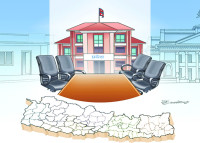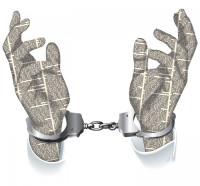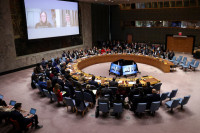Opinion
Getting around town
Having experienced exponential population growth during the last few decades, the lack of a reliable public transportation system in Kathmandu is felt more prominently now than ever.
Shubha Adhikari
Having experienced exponential population growth during the last few decades, the lack of a reliable public transportation system in Kathmandu is felt more prominently now than ever. As a solution, the government is considering building a new rail transit system to serve the Kathmandu Valley. Last May, Investment Board Nepal solicited expressions of interest (EOI) from interested parties to conduct a detailed feasibility study for a metro rail line from Dhulikhel to Nagdhunga.
There is a lot of noise among train enthusiasts about what kind of system is appropriate for Kathmandu—a heavy rail system (metro) or a light rail system. To make that determination, it is important to consider three points: effectiveness, cost-benefit relationship and feasibility. Electric systems will support Nepal’s hydropower industry and help improve air quality by reducing carbon dioxide and particulate pollution that are rapidly deteriorating the already sub-par air quality of the Valley.
Metro rails vs light rails
Metro rail refers to a heavy rail system that runs on a two-rail track supported by a third rail that provides electric power. A metro rail system is always on its exclusive right of way; it cannot interact or have at-grade crossings with other modes. The alignment for a metro rail system can be underground in a tunnel, on an elevated structure, or at ground level as long as it is separated from other modes.
Like metro rail, a light rail system runs on a two-rail track, but varies in some key design components. Light rail vehicles are lighter in frame and smaller in body, typically with a lower floor which requires lower power engines. The power in a light rail system is provided via an overhead catenary. Since its power supply is high up and away from the reach of pedestrians and other vehicles, a light rail system does not require grade separation and exclusive right of way. Just like the metro, the alignment can be underground, elevated or on the surface.
A metro rail train consists of several metro cars. Long platforms covering the full length of the train are needed to provide access to each car. The station also needs to be large enough to accommodate long platforms and be equipped to handle a large volume of people getting on and off the train at a time. A light rail vehicle typically carries only two to three cars. A grade separated light rail system with higher frequency can achieve the same passenger throughput (number of passengers passing through a given location in a specific direction in a unit time) as a metro rail system and still require lower operating cost.
In cases where the entire system can be build underground, metro rail is considered to be the most cost effective system. It can be built and operated without affecting the surface elements. However, the cost of building an underground system could be many times the cost of building an at-surface option. Emergencies like earthquake, flood, fire, power outage and criminal incidents can pose major safety, evacuation and other operational challenges.
An entirely elevated system might fare better in safety and security aspects, but it is not free of similar challenges. The need for an elevation station may restrict the design and capacity of a station, affect station connectivity and access and create challenges during emergency evacuations. While an entirely elevated system might require less property acquisition than a surface alignment, it may still have property impacts as the columns supporting the elevated structure need to rest on the ground at certain intervals. The potential for visual impact is greater with an elevated structure than with an at-grade structure. Going over people’s homes might be as intrusive and impactful as tunneling underneath or taking up their properties. No doubt, there will be places where there is no alternative to going underground or elevated to avoid intersections or heavily built-out areas.
With very limited financial resources available, cost often becomes the deciding factor in moving forward with a project. However, an economic analysis should not focus on direct financial outcomes alone. User and non-user benefits such as travel time savings and travel cost savings must be monetised. Some things are invaluable and difficult to monetise such as culture and history. These aspects must not be ignored in the overall cost benefit analysis.
Different objectives
According to the EOI request, the proposed rail transit is intended as a passenger rail to serve daily flow of people entering the Valley from the east (Dhulikhel) and west (Nagdhunga), and also as a mass transit for the inner core of the Kathmandu Valley. These are quite different objectives and would ideally be addressed by two types of service—a commuter type service to link the Valley with the outskirts and a high capacity mass transit for the dense inner core. But since the government has decided to lump them together, any proposed alternative should take into account both types of environments. The area between the two proposed termini, which are approximately 40 km apart, features diverse topography, urban density, settlement pattern and land use.
An in-depth analysis is required to reach a decision in favor of or against any kind of rail system. The proposed line needs to be feasible to serve lower demand areas on the outskirts while be able to sustain high ridership demand of the inner core. It should offer the flexibility of going underground or elevated in dense urban areas, and be able to share right of way or accommodate an at-grade crossing if there is absolutely no other option. From a transportation planner’s perspective, keeping all these factors in mind and applying educated observation and research, a light rail system might be the right solution. A properly planned and designed light rail offers all of the flexibility the project needs to achieve its objectives.
Adhikari is an urban/transportation planner with US multinational engineering company AECOM.




 5.44°C Kathmandu
5.44°C Kathmandu












